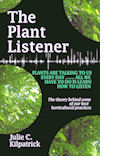Why Cordyline australis loves the seaside
Cordyline australis is a great plant for a seaside garden.
I have quite an extreme dislike of snow. My hatred of snow ranked high on my list of reasons to move thirty miles down the road from the city of Glasgow to the Clyde Coast. Here on the coast of the Firth of Clyde, the gentle warming effects of the Gulf Stream keeps the amount of snowfall to a minimum and in my beachfront location, snow on the beach is a very rare site indeed.
We do get our fair share of wind though. Every two to three years when the conditions are just right, the sea surges over the road and lands right in the front garden and all that strong, salt-laden wind can make choosing the right plants to grow on such an exposed site rather difficult.
Cue Cordyline australis. Like me, it's not so fond of snow and won't like it at all if it has to endure more than a few days with snow on its crown. A few miles inland and it won't be a happy plant at all but it certainly seems to love the coast and it positively laughs in the face of storms.

I planted my Cordylines around 12 years ago when they were just small crowns. They now stand proudly more than three metres tall, three of them marking my territory as the only house with the 'Palm Trees' on our little street.
Of course, they may be exotic looking but Cordylines are not palms. Though they may have what looks like a trunk, they are not really trees either. In fact Cordylines are more closely related to grasses than they are to most trees.
Like the grassy plants that go to make up my lawn, Cordylines are monocotyledons or monocots for short. They have a single seed leaf, parallel veins on their leaves and do not possess lateral thickening. On the other hand, most trees are dicotyledons. They have two seed leaves, net-like veins and are capable of lateral thickening, allowing them to grow nice, thick tree trunks.
It's all to do with the vascular bundles. Most plants have a vascular system just like we do. Their vascular systems carry water and nutrients to all parts of the plants by way of two very different tubes - water and dissolved minerals are carried by the xylem tubes and nutrients in the form of sugars are carried by the phloem tubes.
Because the vascular bundles of broadleaf trees and shrubs are arranged in rings, their stems are able to grow outwards as well as upwards. A layer of cells - the vascular cambium - sits in between the xylem and the phloem and encourages the growth of secondary xylem and phloem tubes. Each time it does this, the old phloem tubes are pushed to the outside and eventually become part of the bark. On the inside, the old xylem cells eventually form the heartwood which helps to make the stems nice and strong. The yearly rate of lateral growth in trees and shrubs forms distinct rings which we are all familiar with.

The term used for the appearance of lateral thickening in monocots like Cordylines, is 'diffuse secondary growth' and this takes place in the spongy filler cells as opposed to the vascular cells. Because they have no hard heartwood, the stems of Cordylines are relatively soft and they can bend more easily in the wind making it an ideal plant for a windy, seaside location like mine. On top of that, with crowns of leaves on the top of the plant and few branches which could potentially be damaged by wind, the plant is further protected from the ravages of storms. Finally, the leaves emerge from a central bud which, even if all the leaves did get lost, the plant could easily grow more.

There are a lot of things I worry about when I watch a storm from my window. I worry about how many roof tiles I'm going to lose, whether my outdoor furniture is secure, whether my containers will get washed away and sometimes, whether a boat might break its mooring and land in my front garden (it has happened!). The one thing I don't worry about as I watch them bending and swaying during the height of the storms, is my Cordylines.
Cordylines in the village of Plockton image by Arthur Bruce [CC BY-SA 2.0 (https://creativecommons.org/licenses/by-sa/2.0)], via Wikimedia Commons
Tree rings image by Gerla Brakkee









